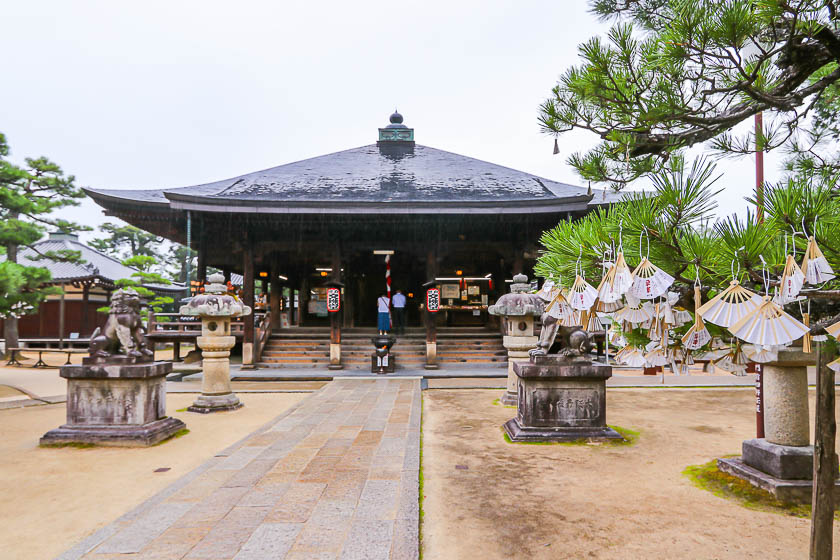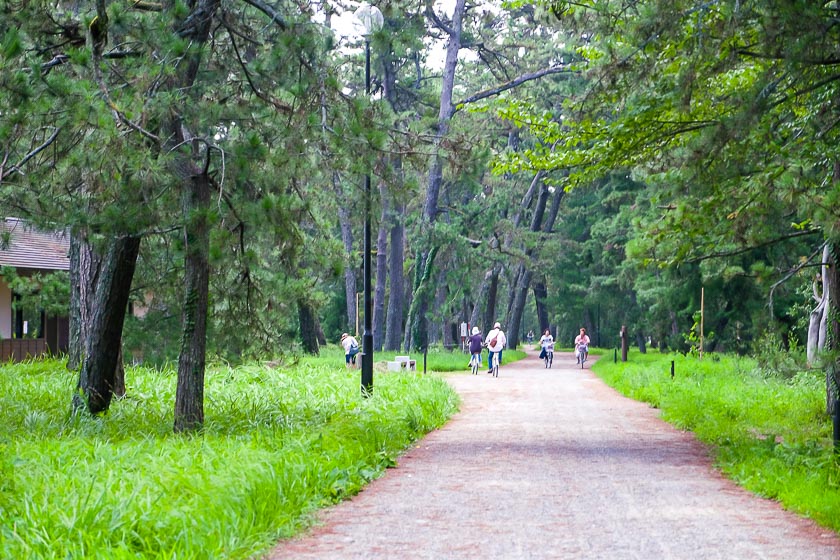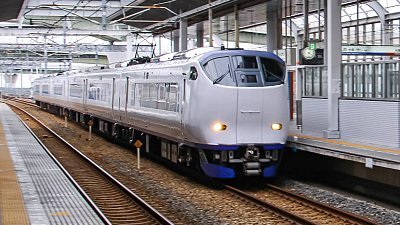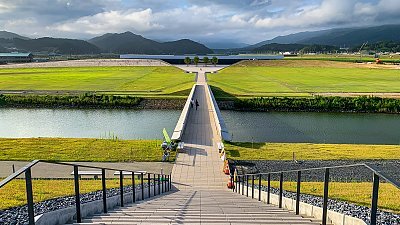Suggested 5-day itinerary for the Kansai Wide Area Pass
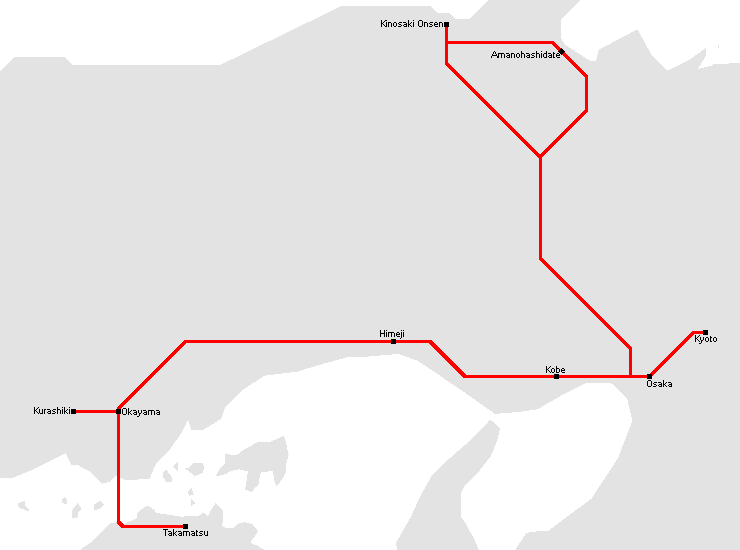
Located in the Kansai Region in western Japan, Osaka and Kyoto are two well known and well visited cities on the tourist radar. The cities contain many sightseeing spots and as such, make for popular bases when traveling in the region. For those looking to expand their travel itinerary in western Japan, a Kansai Wide Area Pass can be an economical way to travel. The following is a 5-day itinerary that can start or end in either Osaka or Kyoto.
This itinerary does not contain an exhaustive list of things to do, but instead, maximizes the pass and takes the traveler to the main and outstanding scenic spots off the regular tourist route. Some highlights include visiting one of the most beautiful landscape gardens in Japan, an UNESCO world heritage castle, one of three most scenic views in the country and a picturesque canal area with centuries of history.
Day 1: Takamatsu
Starting in Osaka, I took the Sanyo Shinkansen to Okayama and transferred to the Marine Liner rapid train bound for Takamatsu. The journey to Takamatsu took about two hours. In Takamatsu, I had the option of taking the train or renting a bicycle to get around the city, and I went for the latter. Rental bicycles are available for a low cost at the underground parking area at JR Takamatsu Station.
Armed with my rental bicycle, I headed to my first stop, Ritsurin Garden, which was about a ten minute bicycle ride from the station. Ritsurin Garden or Ritsurin Koen as it is known in Japanese, is one of the most beautiful landscape gardens in Japan. The spacious garden has a number of paths for visitors to enjoy a leisurely stroll, and cherry trees and plum trees can be seen as well. I spent some time enjoying the seasonal flora in Ritsurin Koen, and stretching my legs after the train ride and bicycle ride. There were also a number of rest areas to sit and appreciate the view, which I also made sure to take advantage of.
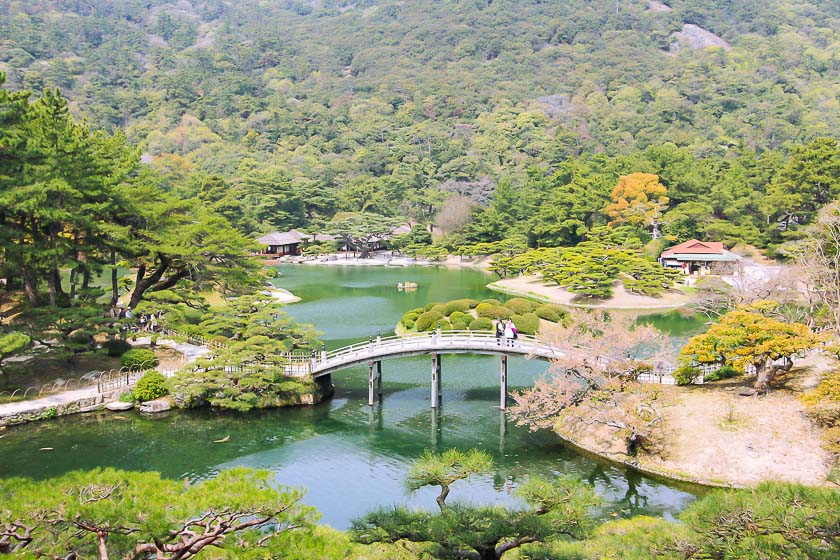
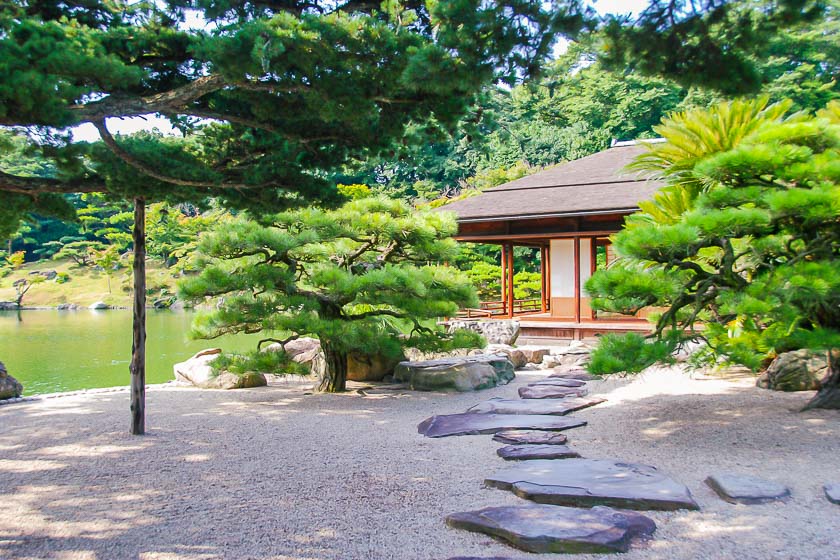
For lunch, I had Sanuki Udon, a local specialty which is well known throughout Japan. Sanuki is the old name for Kagawa Prefecture whose capital city is Takamatsu. In recent years, the prefecture decided that its nickname would be Udon Prefecture to boost tourism and bring attention to the place. A bowl of udon at a no frills udon restaurant typically costs about 300 yen. A variety of tempura is available and together with udon makes for a satisfying and filling meal. Sanuki udon is often topped with sliced green onions, grated ginger and tempura kasu (leftover fried tempura batter), and these toppings are free and self-serve.
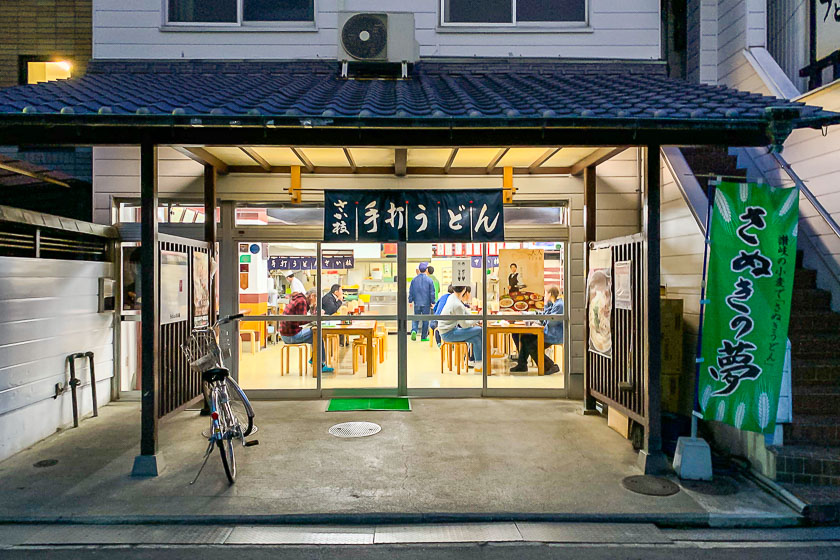
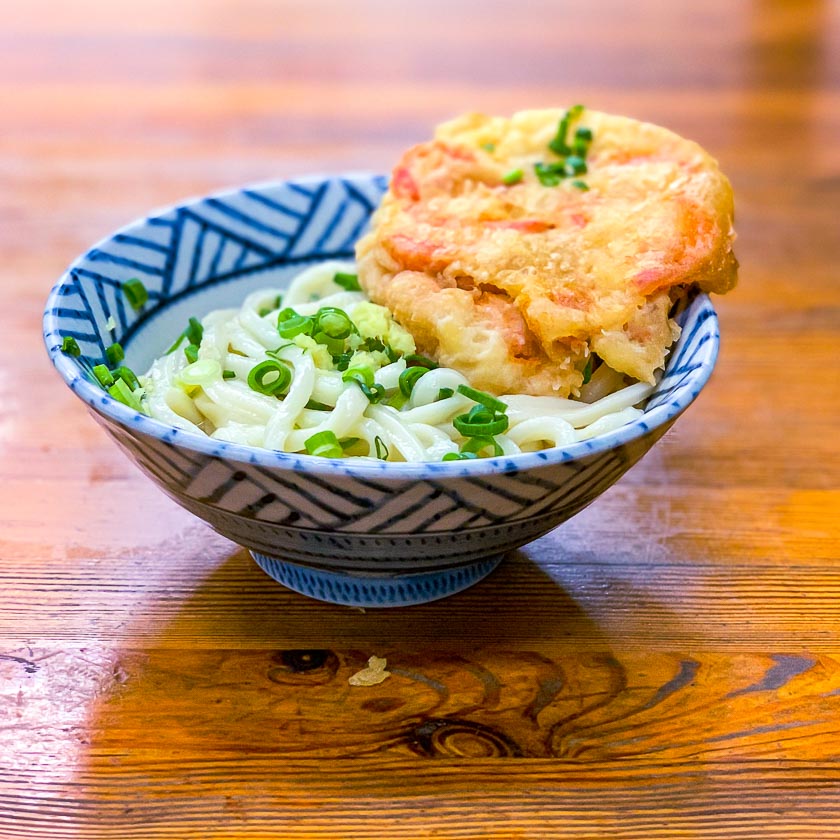
After lunch, I swung by the Kagawa Prefectural Government Office East Building for a quick look at one of the early works of Tange Kenzo, a prolific Japanese architect. The building contains both modern architectural designs as well as traditional Japanese ones, and I couldn't help but be reminded of temples and pagodas while looking at it.
Following that short visit, I cycled through the shopping arcades on my way back to Takamatsu Station. The fully covered shopping arcades contain a variety of shops, from old mom and pop stores to fancy high fashion brands. It was quite nice to take a look at where the locals shop and get a feel of the everyday life.
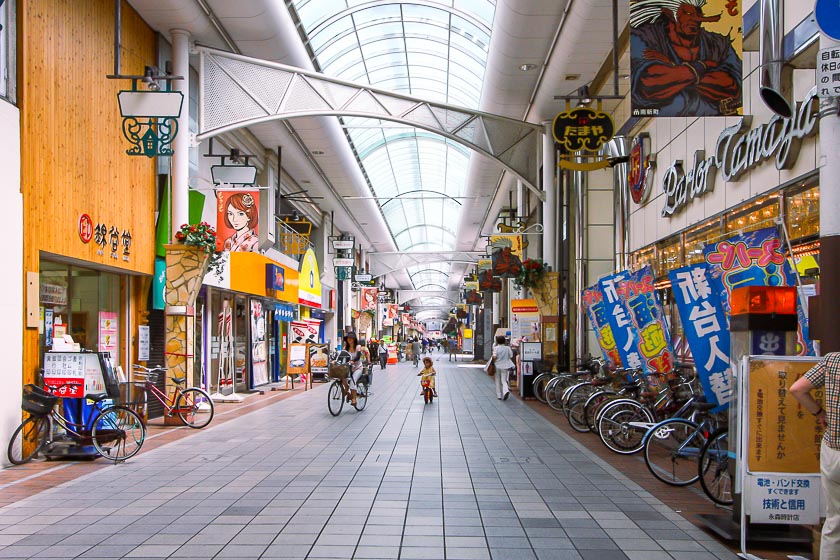
I returned my rental bicycle at Takamatsu Station and walked a few steps to Takamatsu Port to take the ferry to the nearby island of Ogijima. It is recommended to check the ferry schedules beforehand as there is only one ferry every two hours. The ferry ride from Takamatsu to Ogijima takes about 40 minutes.
Ogijima is also one of the venues of the Setouchi Triennale art festival, and there are a number of artworks to be seen on the island even outside of the art festival. I spent some time walking around the village on the small island and checking out some art works before taking the last ferry back to Takamatsu.
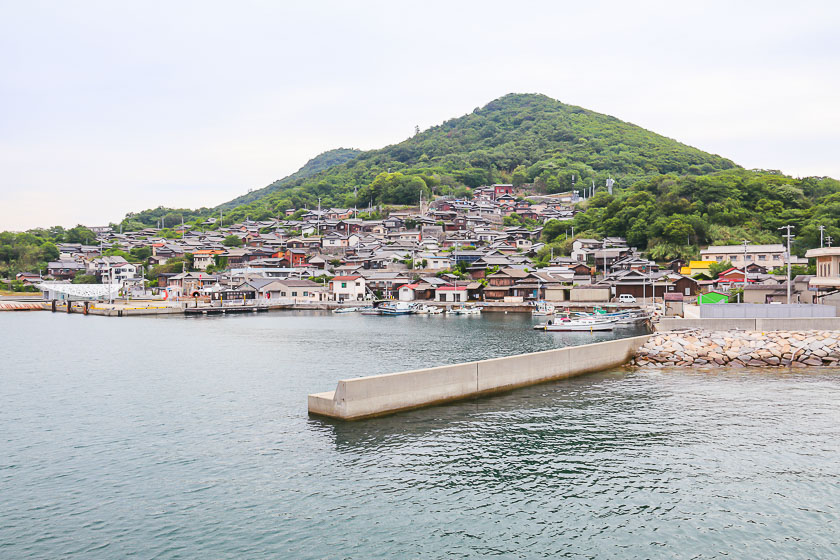
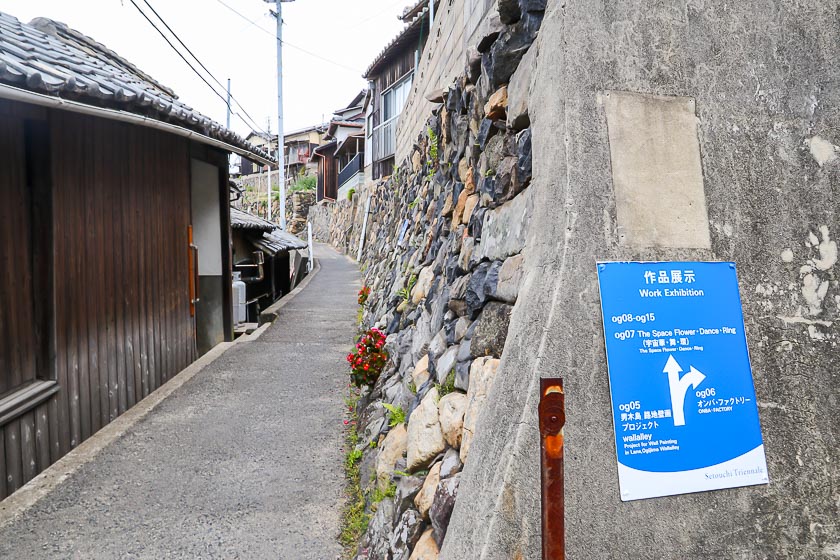
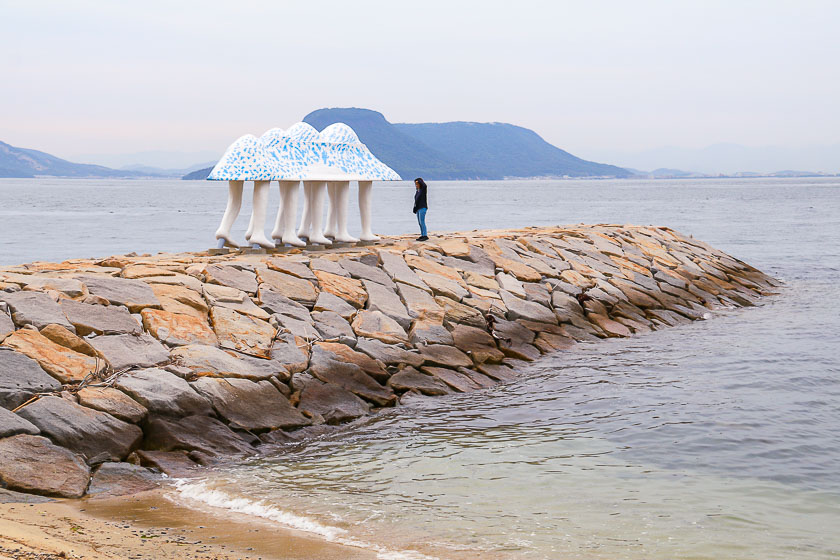
Upon my return to Takamatsu, I went for a walk around the port area before heading to my hotel and retiring for the day.
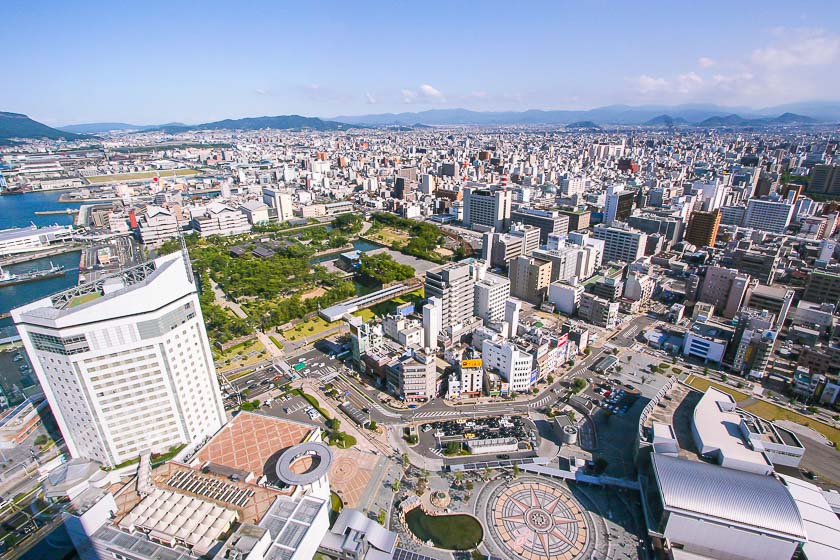
Day 2: Kurashiki and Okayama
I started my second day with an hour-long train ride across the Seto Inland Sea from Takamatsu to Okayama, where I changed to the local train to Kurashiki. Kurashiki is most known for its canal area, the Bikan Historical Quarter, which has been preserved from the Edo Period (1603-1867). The canal is flanked by traditional storehouses, many of which have been converted into shops, restaurants and museums. It is a ten minute walk to the Bikan Historical Quarter from Kurashiki Station through the shopping arcade.
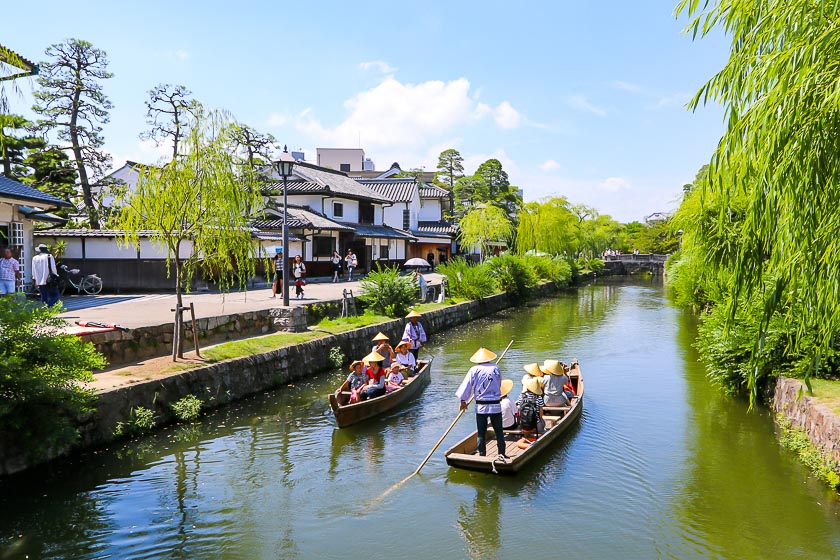
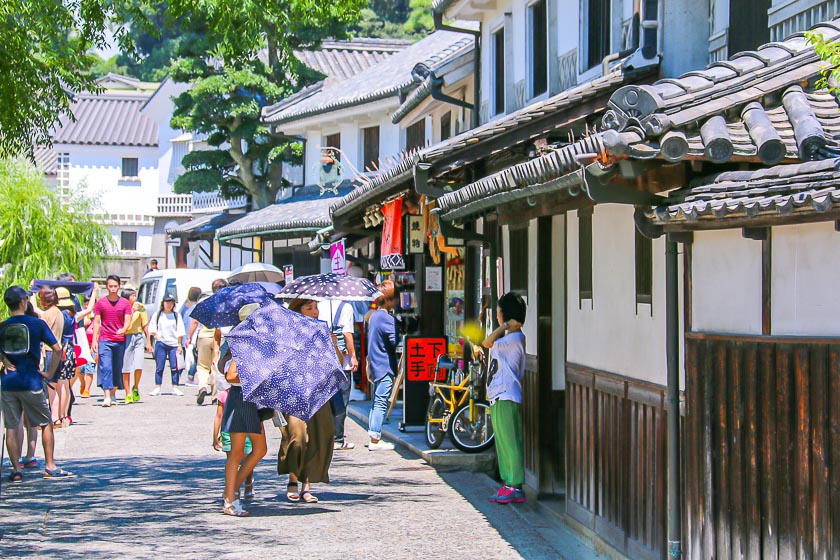
I spent about half my day strolling in the Bikan Historical Quarter, taking in the sights, and entering the various shops and museums. Of particular interest to me were the Ohara Museum of Art with its nice garden, and a number of denim shops selling local Kojima denim. Known as the birthplace and center of Japanese denim, Kojima is located 15 kilometers south of central Kurashiki. Afterwards, I enjoyed lunch at one of the cafes in the backstreets of the main canal area which had been converted from traditional stores.
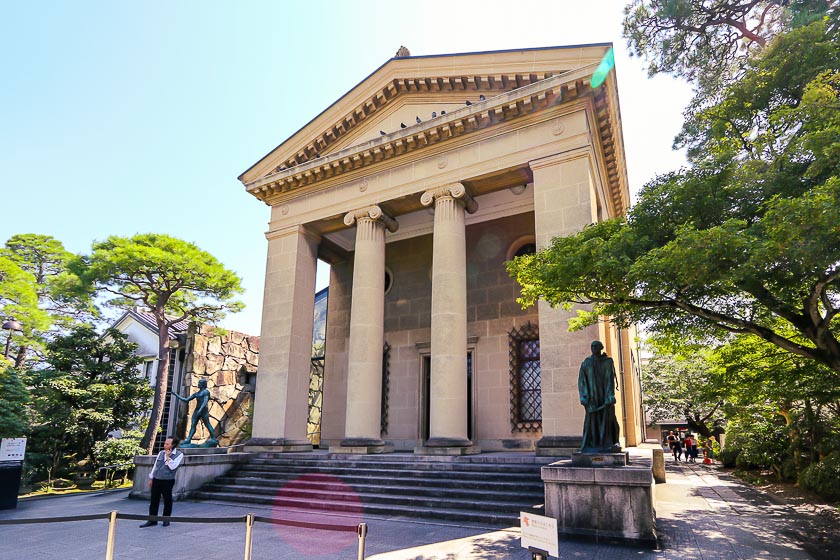
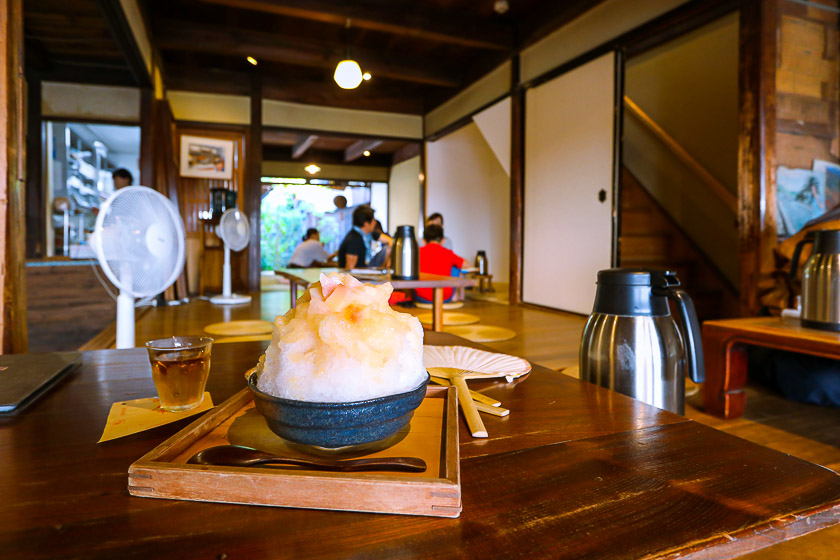
After a leisurely half day in Kurashiki's Bikan Historical Quarter, I got back on the train and headed back to Okayama. The city is most known for Korakuen Garden and Okayama Castle, two popular sightseeing spots. The two are located close to one another, and I took the Korakuen Bus from Okayama Station to Korakuen Garden.
Korakuen Garden holds the distinction of being one of the three most beautiful landscape gardens in Japan. Built as a feudal lord's garden, it features spacious lawns, walking paths, teahouses, cherry trees and plum trees. Okayama Castle also contributes to the garden scenery, and the view of the garden with the castle in the background is a popular photo choice.
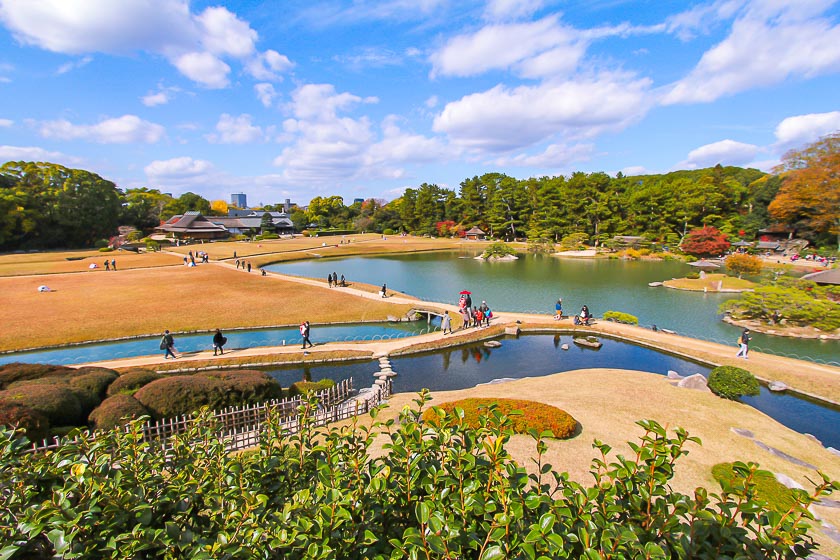
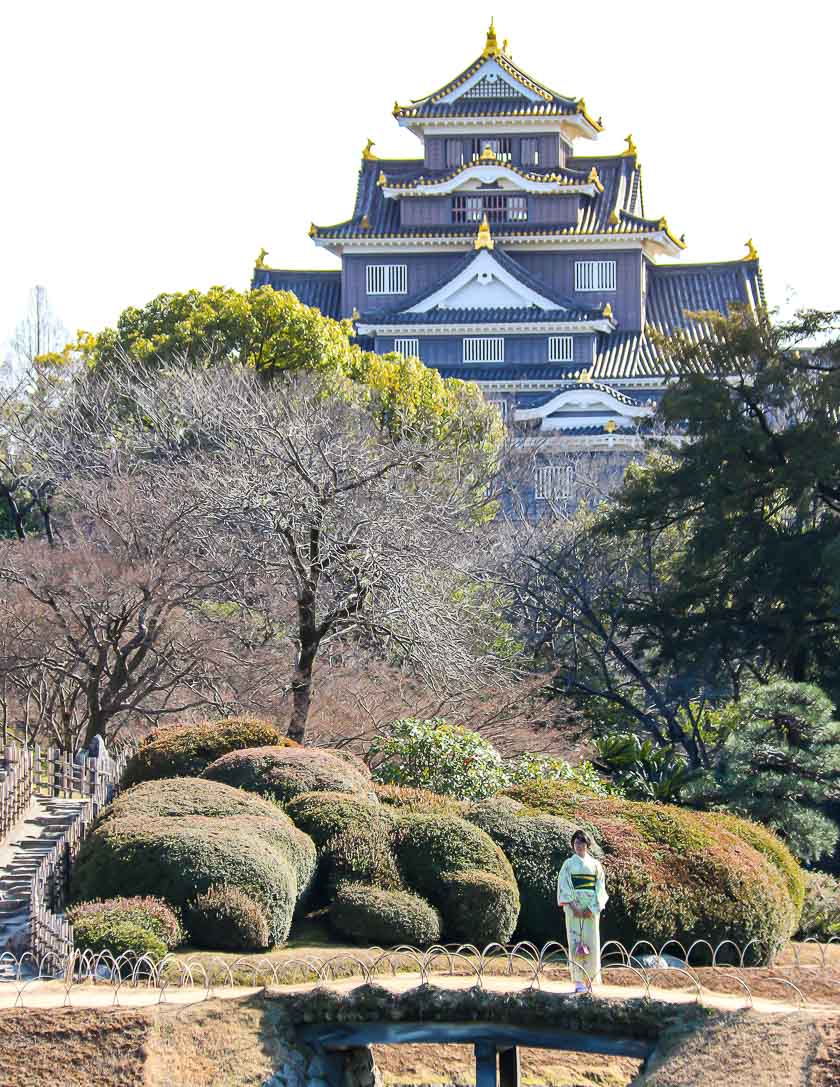
From Korakuen, I walked across the Asahi River to get to Okayama Castle. The castle is a reconstruction from 1966, but it is still worth entering the castle. Inside, visitors can see displays about castle construction, the history and development of the castle as well as participate in some hands-on activities like pottery. A top down view of Korakuen Garden can also been seen from the higher levels of Okayama Castle.
After that visit to Okayama Castle, I decided to call it a day and made my way to my hotel, in the vicinity of Okayama Station, on foot. There are many restaurants in the area around the station and in the underground shopping streets, and the wide variety made deciding what to have for dinner both an easy and difficult task.
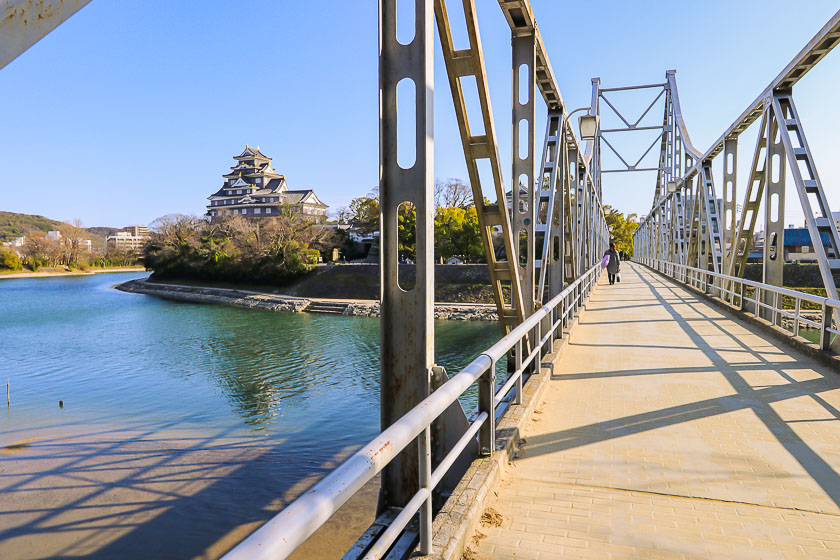
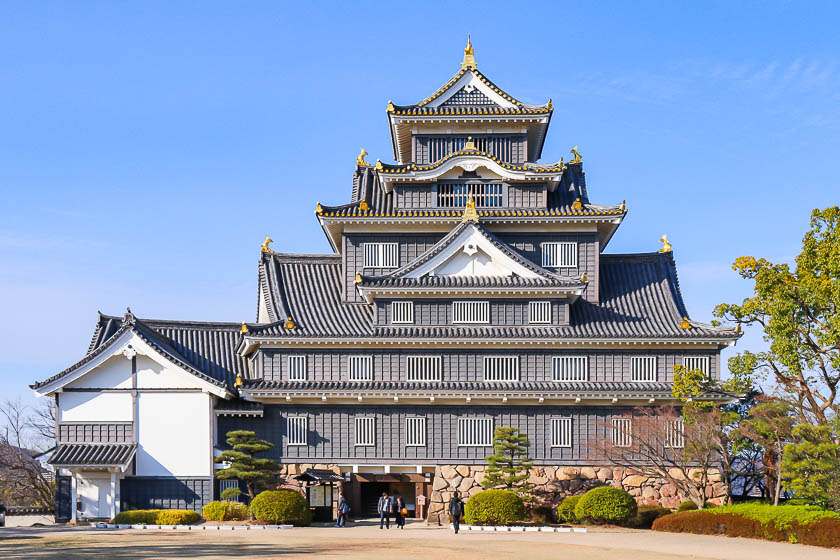
Day 3: Himeji and Kobe
After checking out from my hotel, I took the bullet train from Okayama to Himeji. The train ride took about 30 minutes, and my destination in Himeji was the national treasure and UNESCO world heritage Himeji Castle. From the station, it was about a 20 minute walk down the main road to the castle.
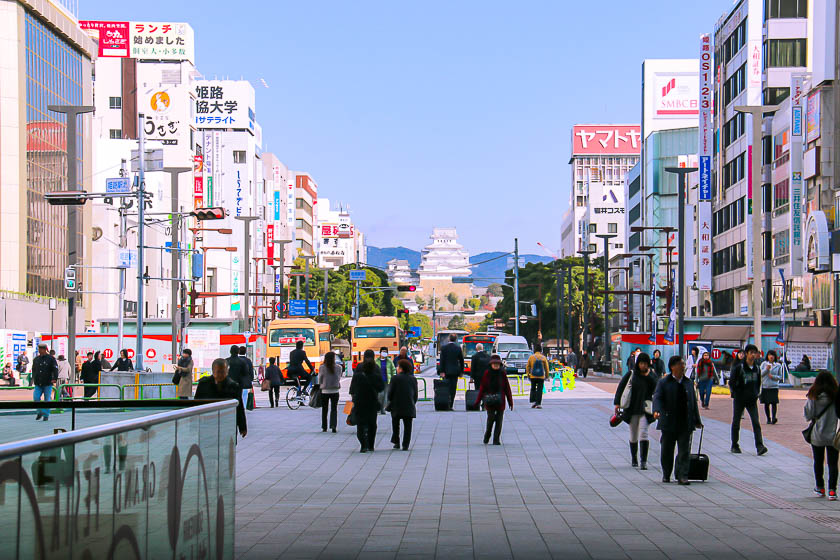
Himeji Castle is one of the most spectacular castles in Japan with it main castle keep, turrets and many buildings all connected by winding paths and gates. The castle was completed in 1609 and has undergone a number of renovations. The most recent renovation lasted several years and was completed in 2015. Visitors to Himeji Castle will no doubt have a good idea of the castle layout and how it might have deterred would-be attackers.
As one of the twelve surviving castles from the feudal period, Himeji Castle is built from wood, has low ceilings in some parts and steep stairs connecting the floors. The main keep's exterior walls and even the joints of the roof tiles are covered in white plaster, earning it the nickname of White Heron Castle as it resembles the bird (white heron) spreading its wings.
There is lots to see at Himeji Castle, including smaller architectural and design points that are easy to miss. Those interested in a detailed visit can download an app which acts like a guide and provides AR views of troops in the castle or how some of the former buildings used to look. A visit to the castle can take a couple of hours.
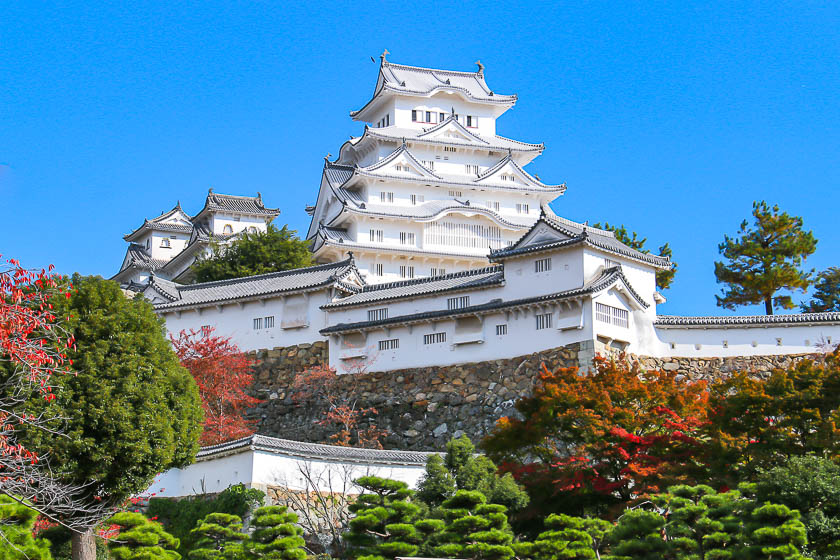
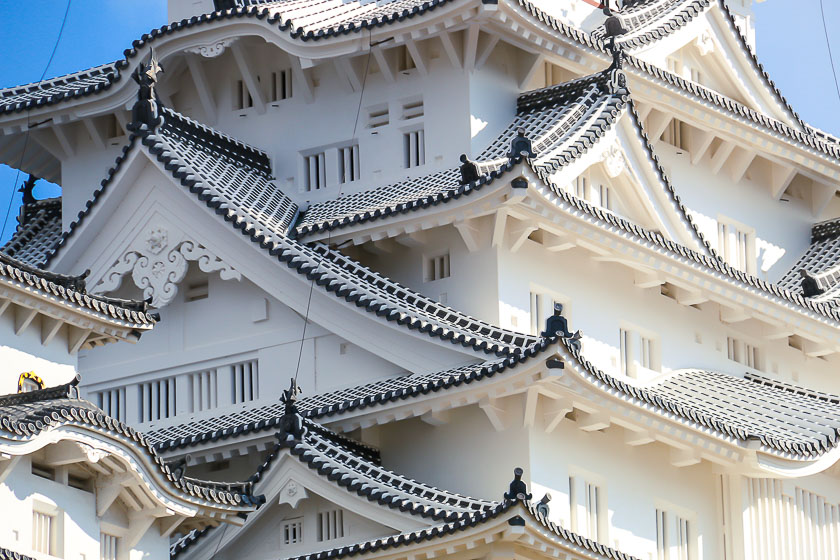
I headed back to Himeji Station after that eye-opening visit to Himeji Castle, and took the local train to Sannomiya Station in Kobe, which took about 40 minutes. As an important port city, Kobe offers plenty of historical sites, and as a bustling modern city today, offers a plethora of entertainment options. Kobe is also known for its Chinatown, one of three major Chinatowns in Japan alongside the ones in the fellow port towns of Yokohama and Nagasaki. When it comes to food, Kobe Beef is an internationally renowned export from the prefecture, and there are many restaurants serving the local delicacy in the city.
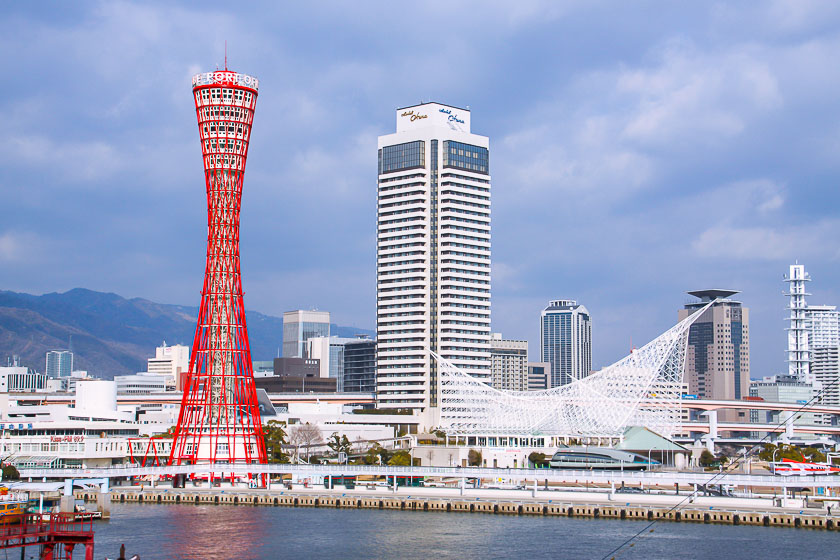
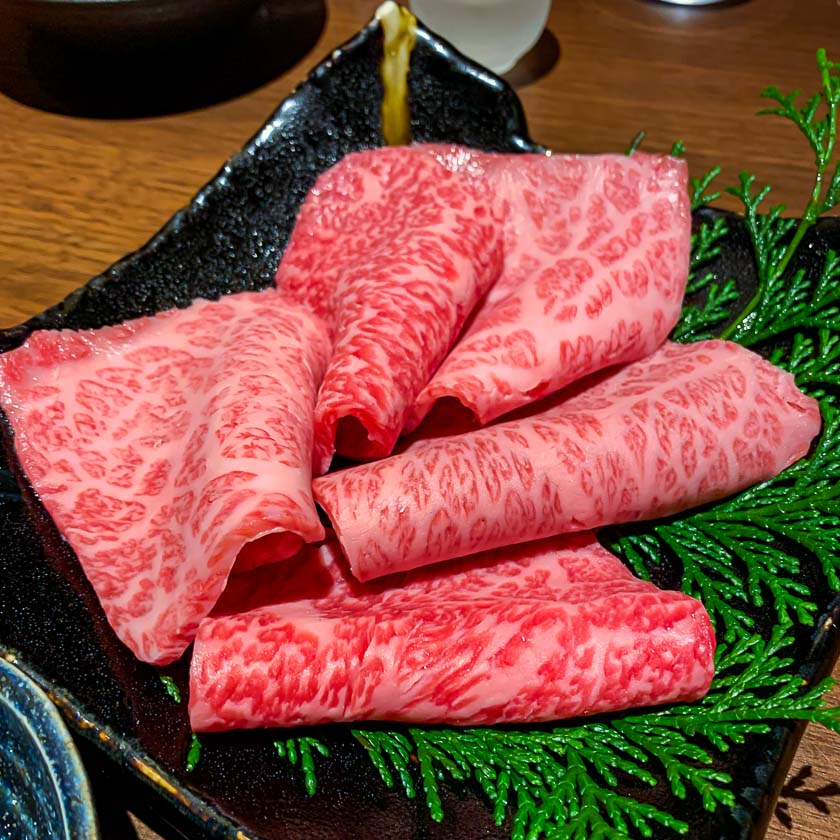
I started my tour of Kobe at the Kitano district, which is about a 15 minute walk from Sannomiya Station. A number of former homes of foreign merchants and diplomats remain in the Kitano district and are open to the public today as museums. Visitors can see these preserved residences as well as antiques from that period. In addition to these mansions, the Kitano area also has numerous cafes, restaurants and shops, which make it a pleasant place to hang out with friends or go on a date.
Following my visit to the Kitano district, I walked to Nankinmachi, Kobe's Chinatown, via the shopping arcade under the train tracks. With the many bright red decorations, store fronts and signs, the sights and smells at Nankinmachi stood in stark difference to Kitano's European vibe. I picked up some Chinese snacks and continued on my way towards Meriken Park.
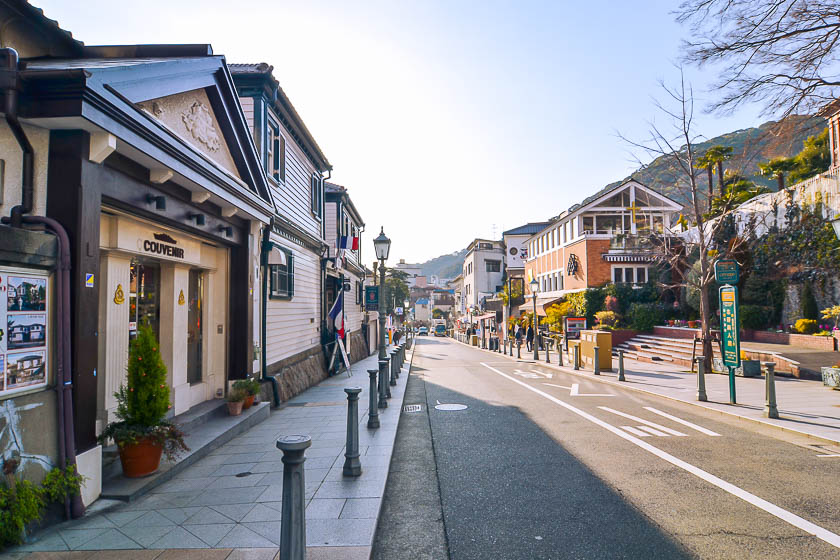
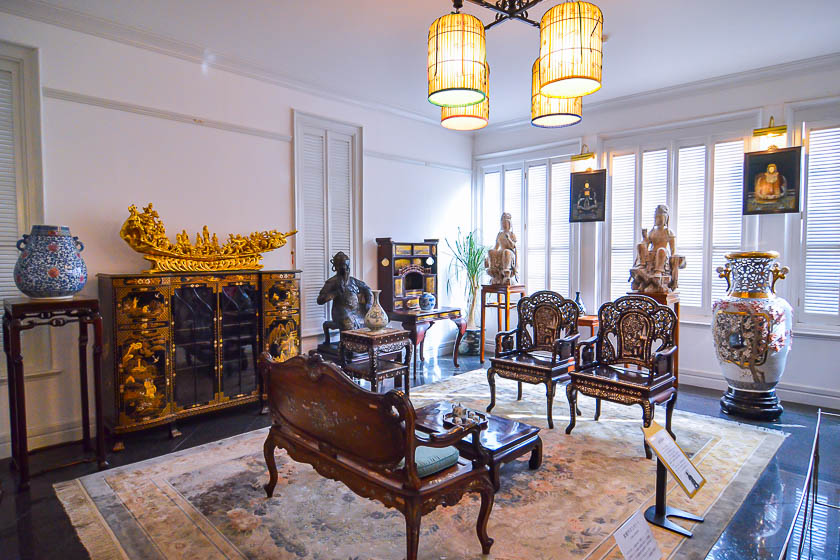
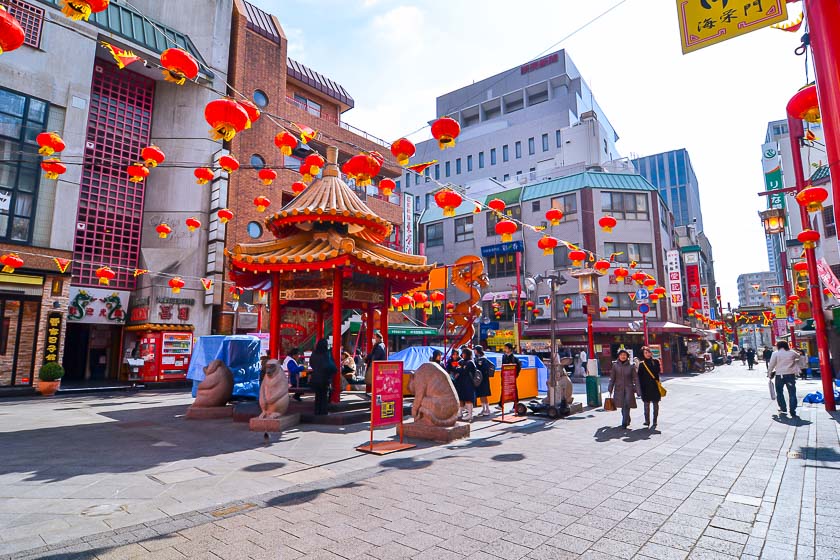
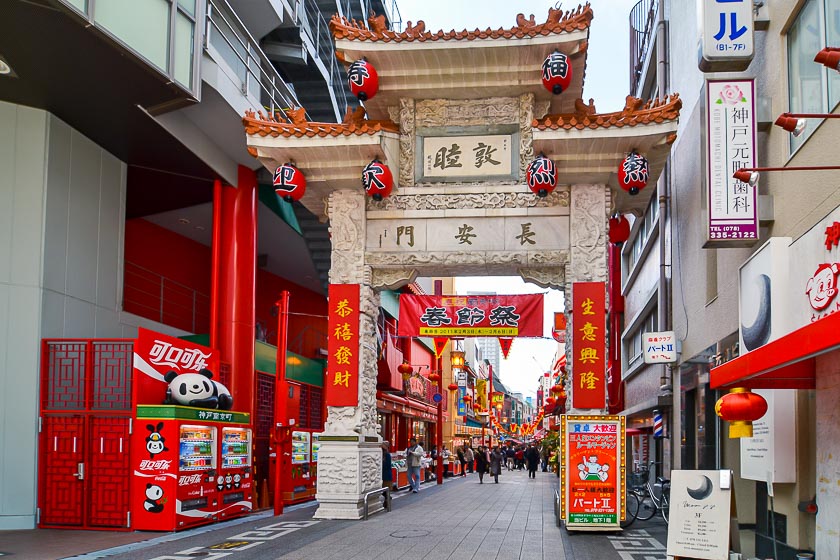
In 1995, Kobe was hit by the Great Hanshin Awaji Earthquake which caused great destruction in the city and the loss of more than 5000 lives. The city was rebuilt, and not much of the destruction can be seen today. A section of Meriken Park was left untouched and now serves as a memorial and reminder of the earthquake. The park also contains the Kobe Port Tower, a red steel structure that is an icon of Kobe.
To wrap up my day, I made my way to Kobe Harborland, a shopping and entertainment district by the waterfront. Strolling along the waterfront boardwalk was very pleasant as the area is beautifully lit up in the evenings.
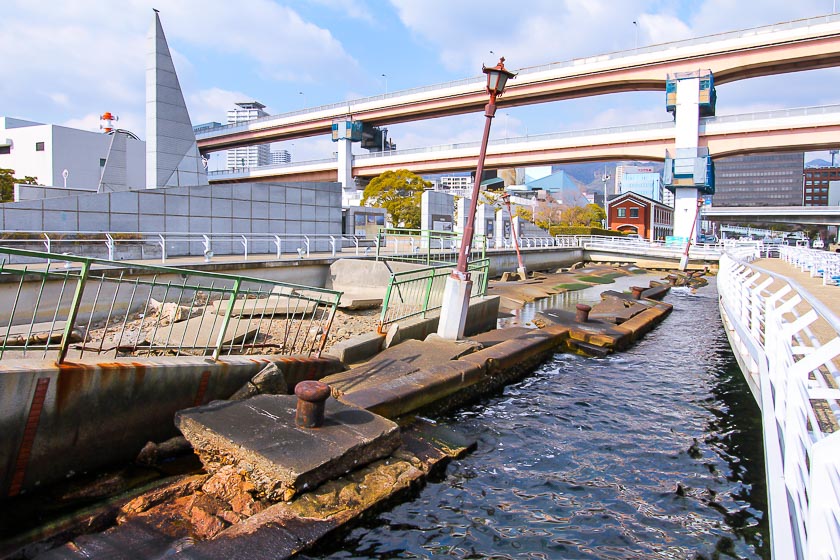
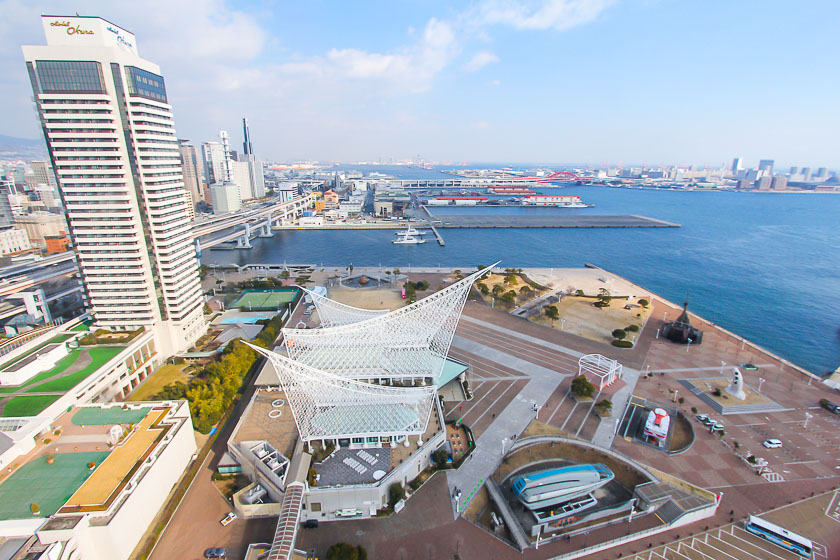
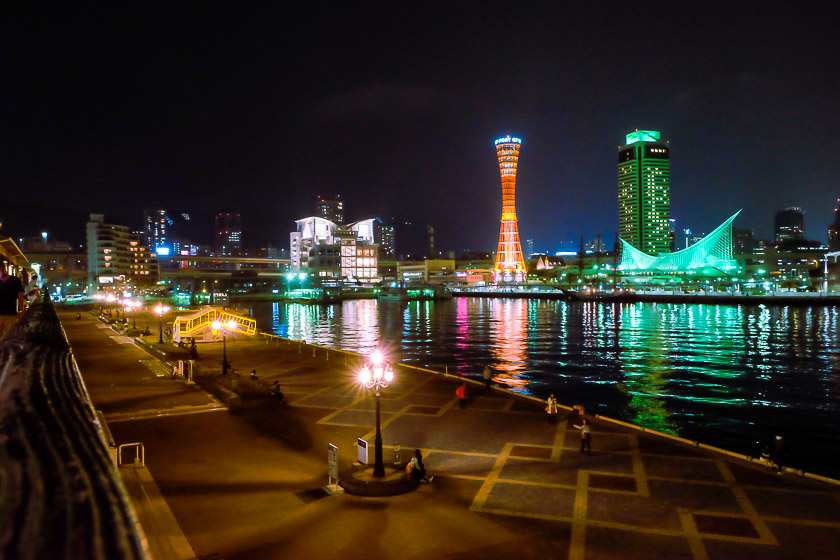
Day 4: Kinosaki Onsen
On the fourth day of my trip, I made my way to Kinosaki Onsen, a hot spring town about three hours from Kobe and where I would spend the night in a ryokan. After spending the previous three days in cities and doing lots of sightseeing, staying in a ryokan and enjoying a nice hot spring bath was very appealing.
The biggest attraction at Kinosaki Onsen are its seven public hot spring baths scattered across the town center. Staying guests can enter all of the baths for free, while daytime users will either have to buy a token that allows them entry to all the baths or pay at each bath they visit. The atmosphere at Kinosaki Onsen was excellent as many staying guests were out and about in the their yukata visiting the baths, shopping or trying their hand at some old-school arcade games.
I wasted no time visiting the public baths after checking into my ryokan, and was accordingly, very relaxed and clean by dinner time at my accommodation.
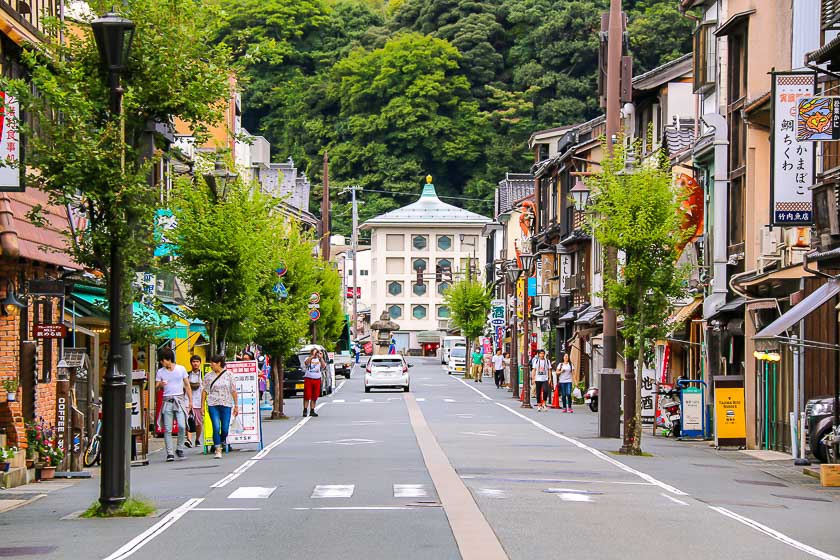
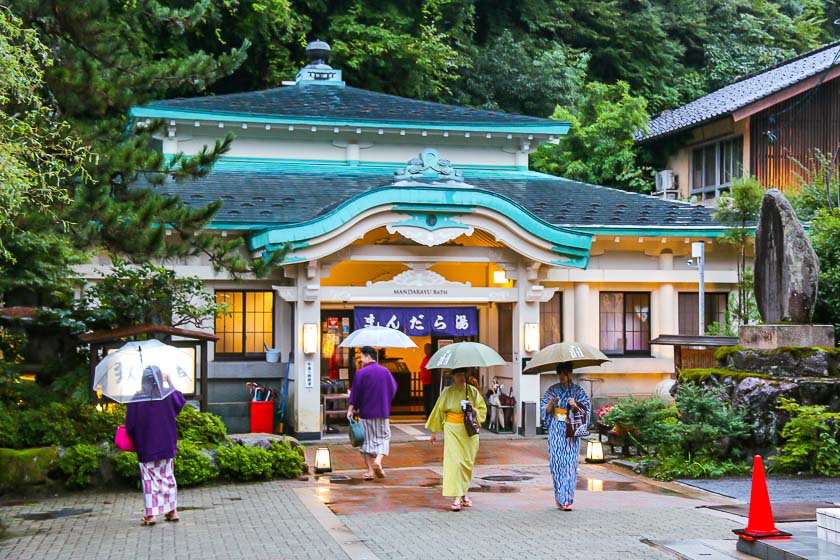
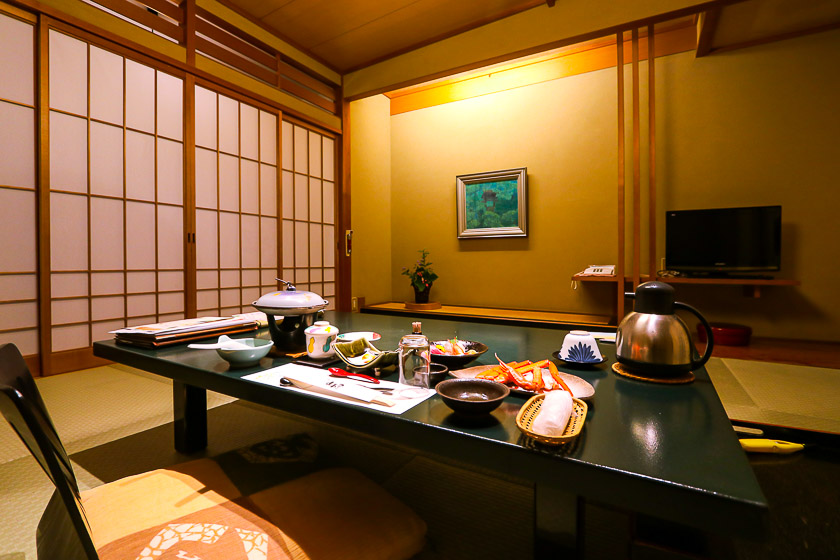
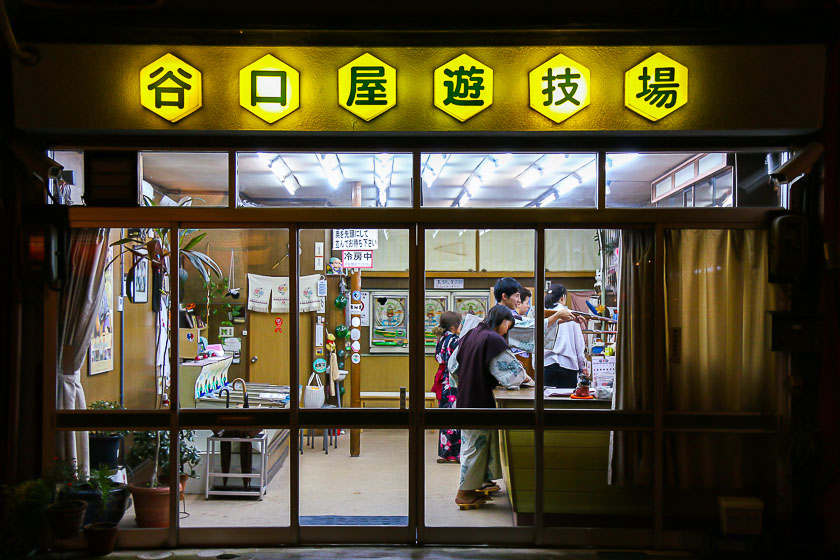
Day 5: Amanohashidate
Not wanting to waste any bath time, I made an effort to visit a couple of baths before checking out of my accommodation in Kinosaki Onsen. After that, I headed to Amanohashidate, east of Kinosaki Onsen in northern Kyoto Prefecture. The train ride, with good connections, takes about 90 minutes. My goal was to see the scenic pine tree-covered sandbar, one of the top three scenic views in Japan, which is said to resemble a pathway connecting heaven and earth. The two other scenic views are Miyajima near Hiroshima and Matsushima Bay near Sendai.
I arrived at Amanohashidate Station in the afternoon and headed to Amanohashidate View Land, a park on a hill where views of the Amanohashidate Sandbar can be had. A popular way to view the sandbar at the park is to look at it upside down through your legs, which is said to make the sandbar resemble a dragon flying up to the sky. Having given it a try, I concluded that one will need a dose of imagination to be able to see the dragon.
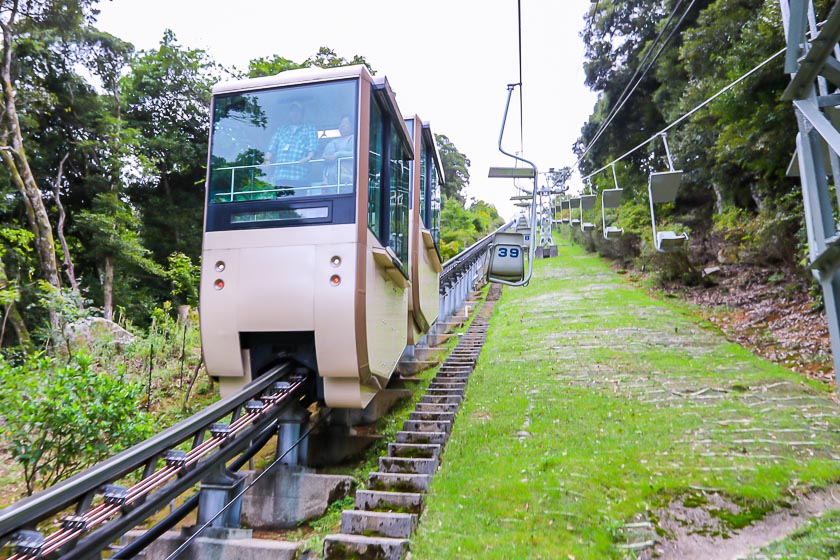
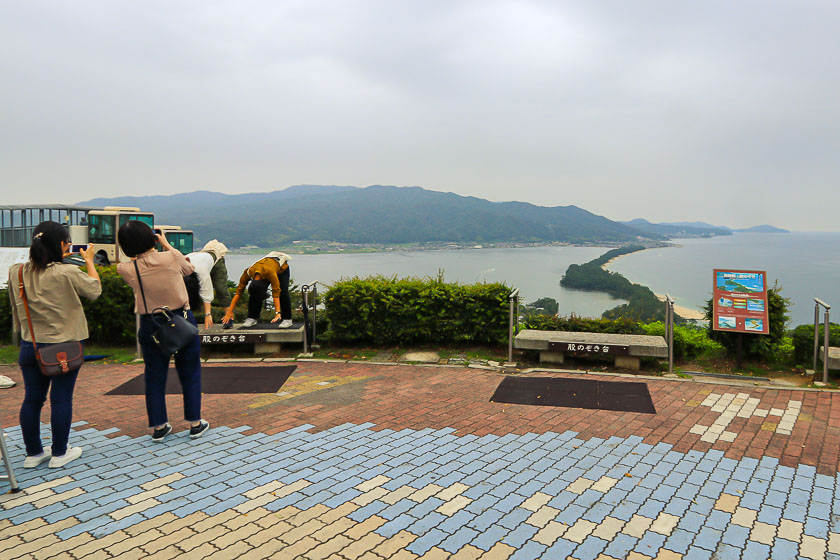
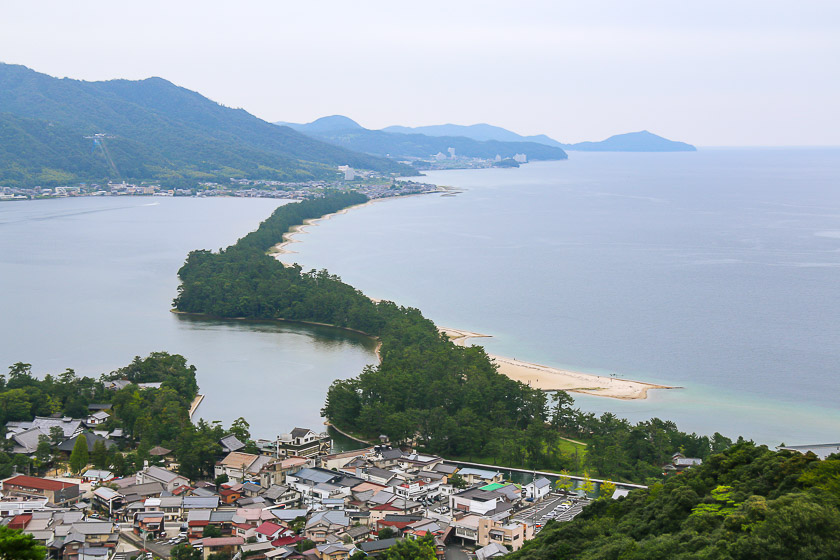
With some more time left before my train, I went for a stroll on the sandbar, visiting Chionji Temple at the entrance before heading in. It is possible to walk the entire length of the sandbar, which takes around 45 minutes, but I only walked about half of it before returning back to Amanohashidate Station.
From Amanohashidate Station, I got back on the train and made my way back to Osaka. The journey with good connections takes about 2.5 hours, and before I knew it, I was back in the metropolis.
